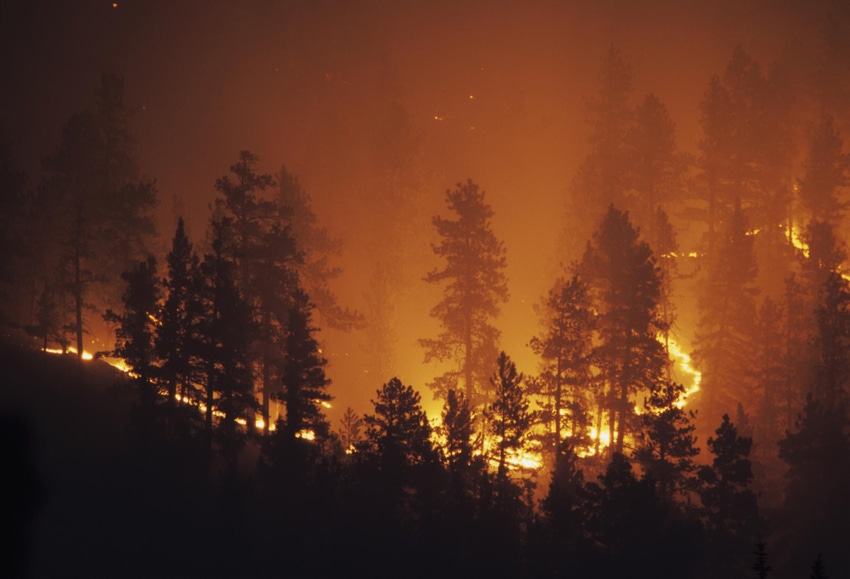Food and packaging safety: You can’t be too prepared for disaster
September 22, 2015

What more can you do to prepare for a food safety event with consequences more dire than even you expected? Adjust your food safety knowledge and processes starting with addressing team strategies, communication and ownership, trace and recall procedures, hazard types and resources.
The safety of your raw and packaging materials, finished goods and services is largely affected and controlled by the risks you anticipate and the processes you put in place to control or prevent them. Will your organization’s food packaging related safety programs, risk analyses and mitigation processes protect you from a public catastrophe?
What if that turns out to not be the case? Whether you sell equipment, raw materials, converted packaging, services or just about anything else that supports the food industry, the principles in this column apply to you.
Recent headlines in the United States have been dominated by reports of deaths from Legionella bacterium in the Bronx and wildfires in the West. Most of us following these catastrophes ask ourselves how these events can get so out of control, when, in large part, they are known and situationally anticipated. This is not the first time that Legionnaire’s Disease generated by airborne microorganisms found in or near air handling and conditioning equipment has impacted humans. As well, wind-driven wildfires feeding on bone-dry vegetation are an annual occurrence. The connection to food safety and lessons learned is that even when serious, life-threatening risks are known, anticipated and mitigated, critical aspects of same are not always understood and controllable before life and property are lost.
These two events which are having such a widespread effect act as realistic comparators to food and materials safety tragedies. As with food supply chain processes, there is ample literature available to property owners and HVAC technicians alike documenting how HVAC and related systems represent excellent host environments for microorganisms to grow and disperse, potentially affecting anyone who inhales them. There are also no shortage of documents describing and predicting the locations and circumstances under which wildfires can and will occur and spread.
Despite all of the warnings, research, modeling, communication and other related best-practices, the sources of the Legionella outbreak in New York City were reported at times to have been unknown.
Despite technicians and local and state health department professionals working around the clock to locate, identify and sanitize in order to correct the conditions, residents were in fear of the extent to which the condition was spreading.
Similarly, this year’s wildfire events appear to be at alarming proportions, out of control not only in California, but also in Washington State, Colorado and Utah. Again, despite all of the known science, warnings, preparation, communications and procedures, lives and property have been lost, with professionals desperate to contain the impact.
Businesses supporting the U.S. food, processing and packaging supply chain assumedly by now know that their products and processes are at risk of being affected and possibly contaminated by microbiological, chemical and physical risks to humans. Their quality and safety stakeholders are well aware of best practices. Certified and qualified branded schemes and programs have been written and adapted for processers, manufacturers, packagers, storage and transporters and other functional specialties and yet events occur despite all of these well intentions.
I suggest that in the wake of the aforementioned catastrophes, consider that despite all the steps you and your organization have already taken, a food safety event may still occur and your response may or may not be adequate to limit the scope and harm of the event.
What more can you do to prepare for a food safety event with consequences more dire than even you expected? Adjust your food safety knowledge and processes. Flawed or underdeveloped processes increase the potential for high magnitude, in-market events.
Actionable advice to follow…

Author Gary Kestenbaum
Here are some fundamental suggestions for your consideration based on information and feedback I’ve obtained from the industry:
TEAMS
Review your safety team strategies. Evaluate what teams you have in place and consider where the involved members represent the necessary functions and knowledge to add the most value. Examples include:
Food processing and handling safety teams
safety and quality continuous improvement teams
food processing equipment preventive maintenance teams
Raw material quality and safety sourcing teams
HACCP plan teams
Equipment safety teams
Construction and maintenance safety teams
Crisis team
Post-crisis lessons-learned teams
Training process and knowledge demonstration teams
Challenge yourself to consider where the gaps are. No one does everything perfectly. There are gaps everywhere and I assure you, there are experienced resources in your organization who can identify some of those gaps. Engage your resources and experts, and challenge them to identify gaps and risks. Then weigh the consequences, create a priority list factored by likelihood of occurrence and extent of harm. For example, there may be a low risk of pathogen contamination, but if that occurs, the harm to those humans affected is high.
2. COMMUNICATION and OWNERSHIP:
It is not always popular to be a champion for safety and quality change, and often it is frustrating. Make sure that the fruits of your labor are communicated with passion. Collect the data and develop presentations illustrating the impact of safety events to customer loyalty, impact to operations and other major impacts. Use examples culled from real-life situations and outcomes with which your audience can connect.
3. TRACE and RECALL PROCEDURES
Most trace and recall procedures include specific steps to take, but may be written with general language. For example, if you have some high speed state of the art production lines with all the latest accessories, the trace and recall may have been written to reflect those capabilities.
Or have they been? Maybe the T&R procedure was written during the days when you only had aging, basic assets in place (no advanced capability). Consider trace and recall protocols a step by step process guide to be used by who knows how many people in your extended organization once a food safety event occurs. Will all of the field operatives understand the language and complexity of what you’ve written? Will the procedures take into consideration both advanced and basic functions (such as code-dating and product identification)? Have you included the use of RFID into the process? Treat T&R as a process in need of continuous scrutiny and improvement.
4. HAZARD TYPES: Microbiological, Chemical and Physical
Has your HACCP team adequately and completely considered all three? When you did your assessment, you considered which of the three were more likely to occur. Consider that even though risk may appear to be low, it is not impossible.
Microbiological
As an example, due to what you’ve determined to be a low risk of occurrence, your facility does not choose to have production equipment, raw materials and finished product swabbed and tested for microbiological contamination. Following further review, the HACCP team is reminded that microorganisms can be brought into production areas through human contact, raw materials, packaging, multi-use accessories (pallets, trailers) and, as stated earlier, standing water, condensate etc. After careful consideration, the Team recommends a limited, yet practical microbiological testing protocol as a sensible alternative to inaction.
Chemical
Chemical contamination may enter a supply chain from a variety of sources. Do you have a best practices chemical safety process in place? Do you test random samples and surfaces for chemical contamination? Do you test raw and pack materials for contamination from unwanted components, or do you rely on vendor’s Certificates of Analysis, Compliance and Composition? If you do not have an audit and analysis process in place, are you alternatively prepared to deal with consequences in the event of contamination? Do you evaluate recently manufactured product for unwanted or unexpected substances, odors or taste? Have you adequately assessed the potential for cross-contamination from internal and external sources?
Physical
Every process has risk for physical contamination from ancillary sources. Have you considered them all? Ceilings, walls, open windows, utilities, floors, refuse containers, containers in general, tools, exteriors, pallets and racks, equipment, humans, construction, maintenance and just about every other tangible item or process in, on or near production process and goods has the potential to facilitate consumer-level physical contamination. Have you included and evaluated each in your assessment forms? Are they documented in a schedule which includes team decisions on “likelihood of occurrence” and “degree of harm when occurring”? This is another continuous examination and analysis segment.
5. RESOURCES
As in the prior mentioned examples, when unexplained, unexpected, under-considered or under-resourced events occur which threaten human safety, how have you prepared to quickly and effectively reach outside the organization for mutual aid, expert resources and functional assistance? Organizations, regardless of size, must have a plan to execute when the situation appear to be expanding or out of control. Once human health-related cases expand, you can be sure that regulatory authorities will demand answers as to how your organization intends eliminate the threat. Challenge your crisis team with mock incidents and exercises, the results of which are reviewed, “graded” and discussed as tools for continuous improvement.
These are but a few examples of how to challenge and stress-test your processes. But be advised, every function reading this column be you technical, operations, safety and quality, procurement and purchasing, warehousing, transportation and logistics or senior management, the safety of everything then flows through your hands is process-driven. Assume that all of your knowledge, experience and historical success may very well insulate you from a consumer-safety catastrophe. Now is the time to review, reconsider, rewire, adjust and continuously improve.
Gary Kestenbaum has 40 years’ experience in the food and packaging industries, six as a supplier with National Starch, 18 as a product developer with General/Kraft Foods and 15 as a packaging engineer and developer with Kraft. As senior food packaging safety consultant with EHA Consulting Group, Kestenbaum provides guidance on packaging safety and suitability-related projects for raw material manufacturers, converters and associated supporting professionals. He can be reached at [email protected] or 410-484-9133. The website is www.ehagroup.com.
About the Author(s)
You May Also Like




